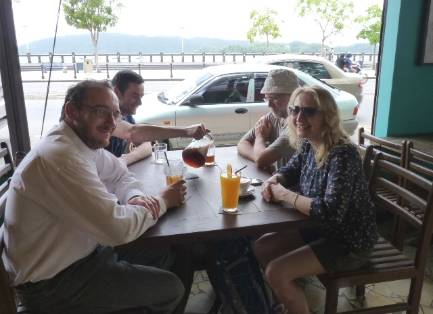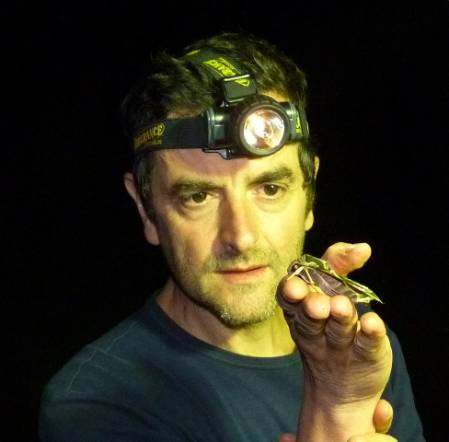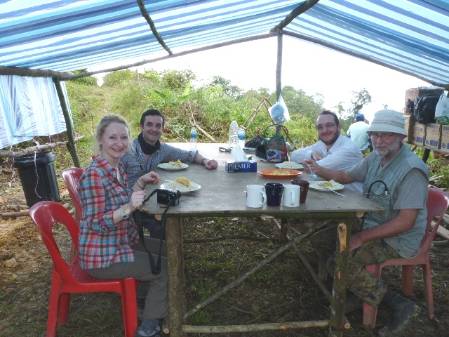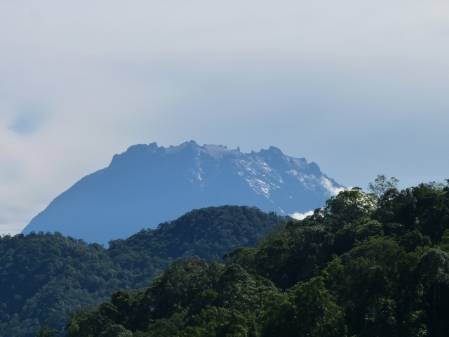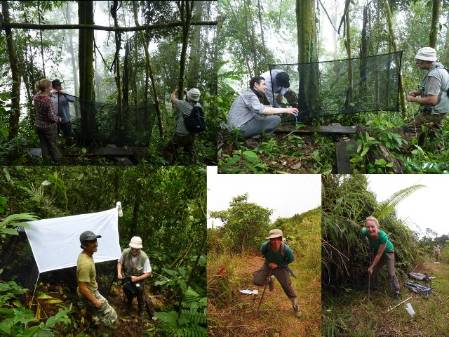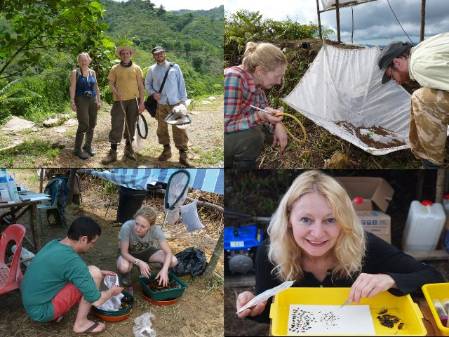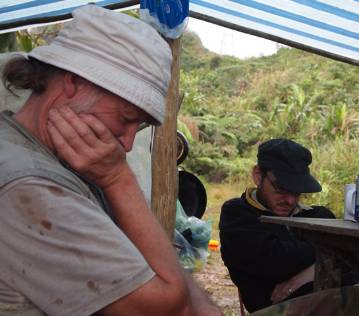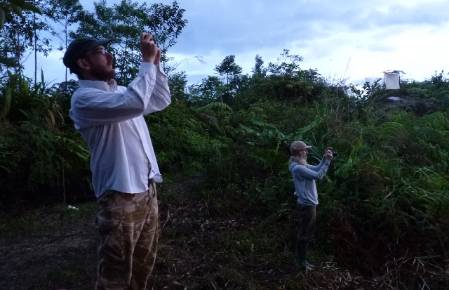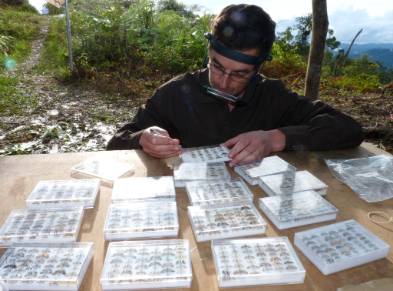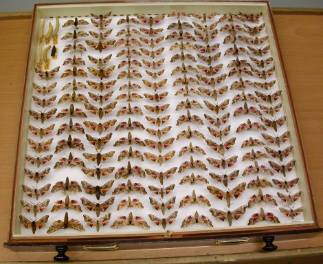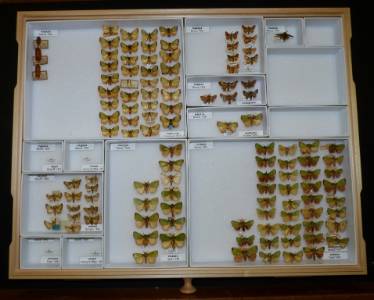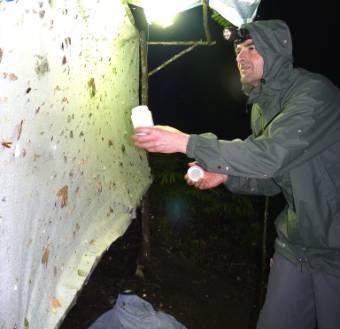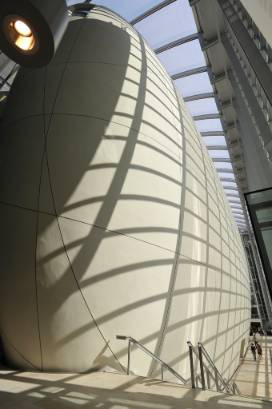So let me tell you about my last bit of work experience - if you've already been enjoying Beulah Garner's Beetle blog, you'll know that recently she and her fellow coleopterists went on a trip to Borneo. For the sake of completeness, I should point out that the Borneo team for the trip also had a lepidopterist on board. And that was me! Hence, in the company of three beetle zealots that go by the name of Beulah the blaps, Max the Macrodonta and Howard the Temerarious, I thought I’d be up for a challenging field work experience.
Alessandro, Max, Howard, and Beulah socializing and relaxing in Kota Kinabalu, before the hard work begins.
Despite being a moth curator, I can’t resist showing a picture portraying myself with a beautiful newly emerged Troides amphrysus, a papilionid butterfly.
And here I am again, this time face to face with a handsome hawkmoth (Daphnis hypothous).
Once in the field the four of us did a great deal of sniffing, inspecting and probing, trying to ascertain each others’ intentions; and after our exigencies and flaws had been determined we recognized where each of us stood and accepted our echelons.
And so began our fieldwork experience which, apart from the rare squabbles caused by blunt episodes of trespassing in our private boundaries, turned out to be a rather successful one. After all we were there with a common aim that could have only been achieved with a team effort and we certainly had the enthusiasm to go with it.
Our first supper at the camp. Little did we know that from that day onwards, rice was to be the fundamental ingredient of all our meals, breakfast included…not to mention the questionable rice wine.
The aim of this trip was to collect insects from an area near the western edge of the Crocker Range, in the Sabah region of Borneo, an area not well represented in our Museum collections; all in order to expand our knowledge of the world’s biodiversity.
Our base was at ca. 1,200 metres above sea level and we had amazing views of the surrounding valleys and mountains.
Further in the distance the impressive 4,095 metre high Mount Kinabalu seemed to keep a constant vigil on our camp.
Different sampling methods are used to collect different groups of insects, and during this trip we employed a good range of them. We set up 7 malaise traps and 7 flight interceptor traps (FIT) in selected sites of the forest around the camp, to collect flying insects such as beetles, flies and Hymenoptera (bees and wasps).
Putting up flight interceptor and malaise traps, and digging for victory (or was it for dung traps?).
We gathered leaf litter, dead wood and other organic material, such as figs, Asplenium ferns and bracket fungi, and sampled them separately in Winkler bags or by hand; we filled buckets with rotting fish, fermented fruits and dung (I won't tell you whose it was) to attract beetles and other unfussy insects. We regularly went for long walks in nearby areas to collect insects by sweeping with nets.
On one of our long walks collecting insects by netting. We were often also sampling for insects in different types of organic material.
Some days the field work was so exhausting that even the experienced and indefatigable amongst us had to take a nap.
And as if that wasn’t enough, every day after having being mesmerized by yet another magnificent and unique sunset, we would turn on our light traps (4 of them to be precise) and spend hours checking each of them in turn, collecting whatever we thought was worth recording.
Every evening the sky and landscape around the camp would become the backdrop to breathtaking and exclusive sunsets.
Can photographing sunsets every evening, have disturbing consequences on people’s size?
Sorry if I haven’t talked much about lepidopterans in this post, but I thought it was important to give a little introduction before getting down to business. So if you enjoyed reading this make sure you don’t miss my next entry where I will actually feature some lepidopterans and talk about catching moths in Borneo.
But ... just to wet your appetite...
Large - and beautiful - Atlas moths were regular visitors at our moth traps. This is Archaeoattacus staudingeri, a relative of the more common Attacus atlas, found in Borneo and other areas of the Sundaland region.



